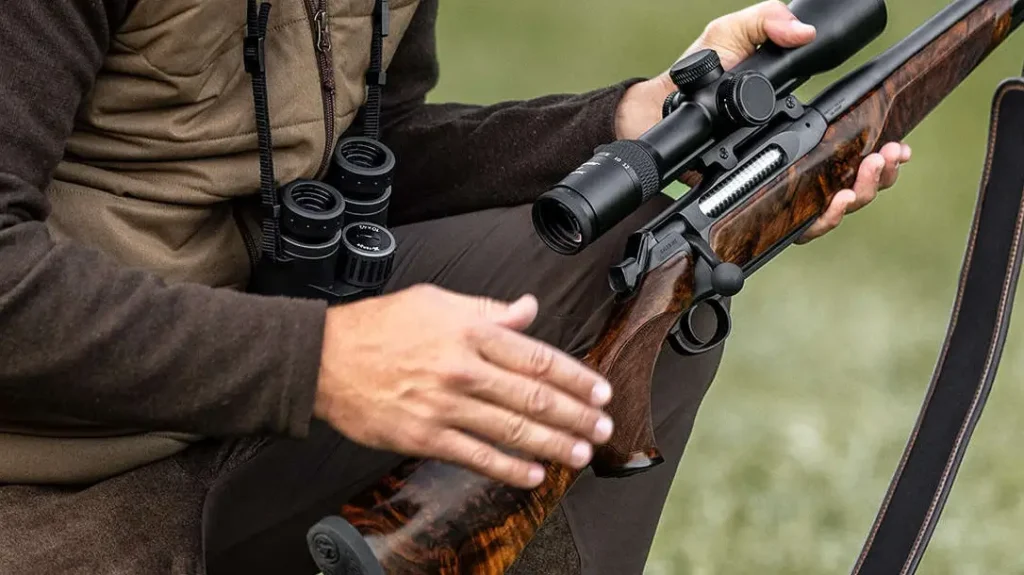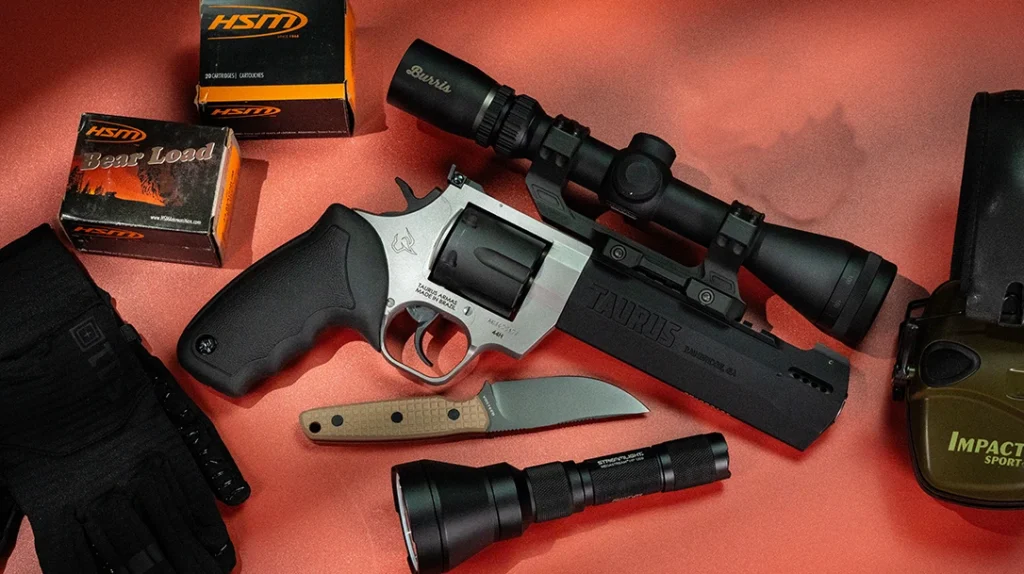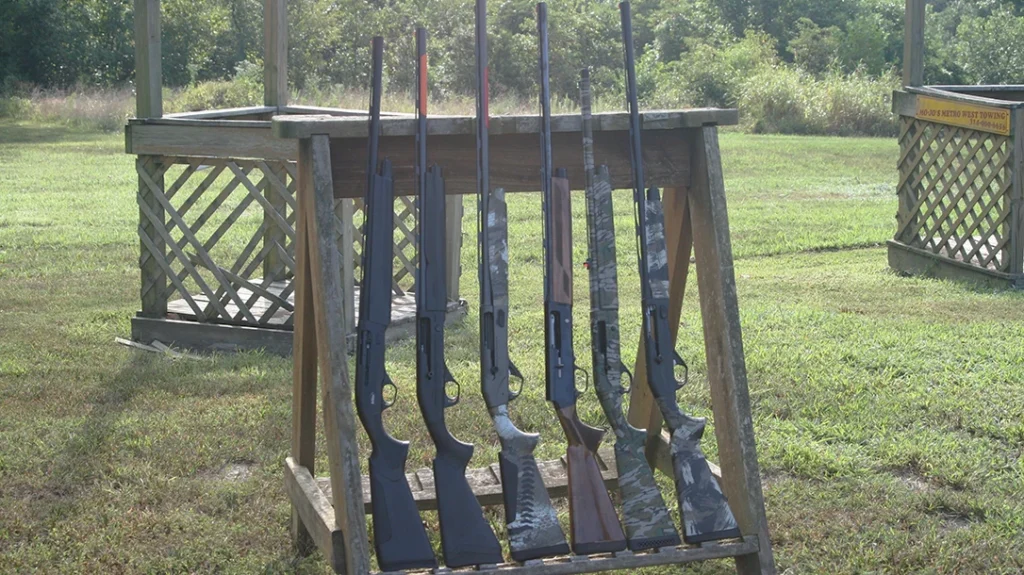Back in 2007, the folks at Thompson-Center made their first venture into the bolt-action centerfire rifle market with the Icon. The one I tested back then was a handsome thing that offered an optional walnut stock at least one grade, if not two, above what you usually see in an average production rifle. The Icon was among the first to combine a wood stock with an aluminum bedding block chassis. Appearance-wise, the blued barreled action was polished to a degree seen only on more expensive guns.
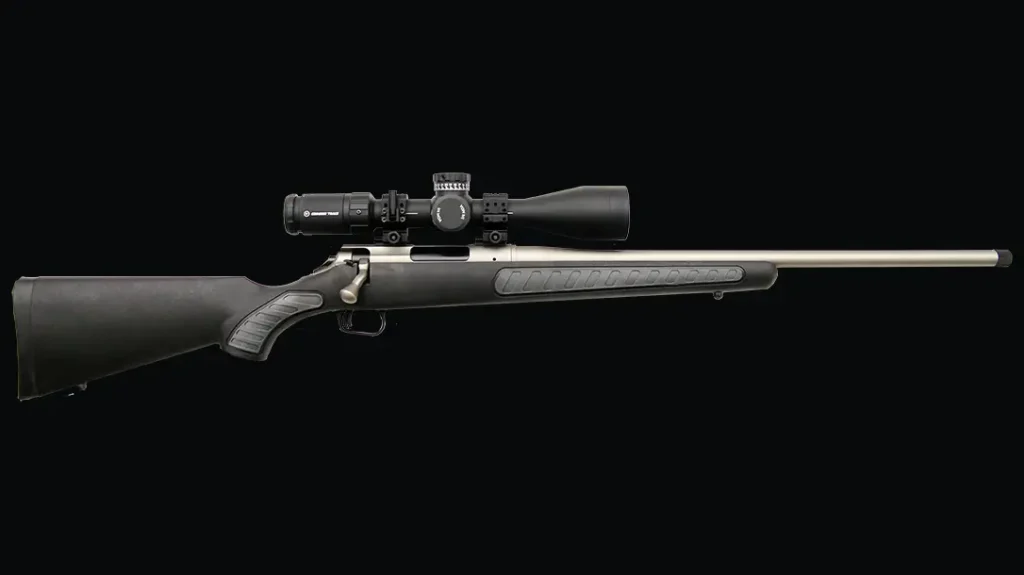
Thompson-Center’s Venture II – A New Venture
As for the mechanics, the Icon employed the tri-lug fat-bolt concept that has since been adopted by most of the new bolt actions we’ve seen of late—guns like the Ruger American, Winchester XPR, Merkel M16, Sauer 100, Lithgow LA102, Steyr SM12, Franchi Momentum, and the Sabatti Saphire. I’m sure you’re all familiar with the basics, so I won’t go too far into the weeds here other than to say that it allows an action to be produced more economically than your typical Mauser-type turn bolt.
The fatter-than-normal bolt usually has three locking lugs, spaced at 120-degree centers, formed by simply machining metal away from the head. There are exceptions, however, like the Roessler Titan 6, which has six lugs, or nine in the case of the Weatherby Mark V Magnum, but the mechanics are the same. Because the lugs do not project beyond the diameter of the bolt body, only a round hole in the receiver is required for a raceway. Three lugs (or six or nine) provide shorter bolt rotation (handle lift) than a Mauser-type action and slightly faster cycling time. A unique Icon feature was the availability of three user-changeable bolt handles.
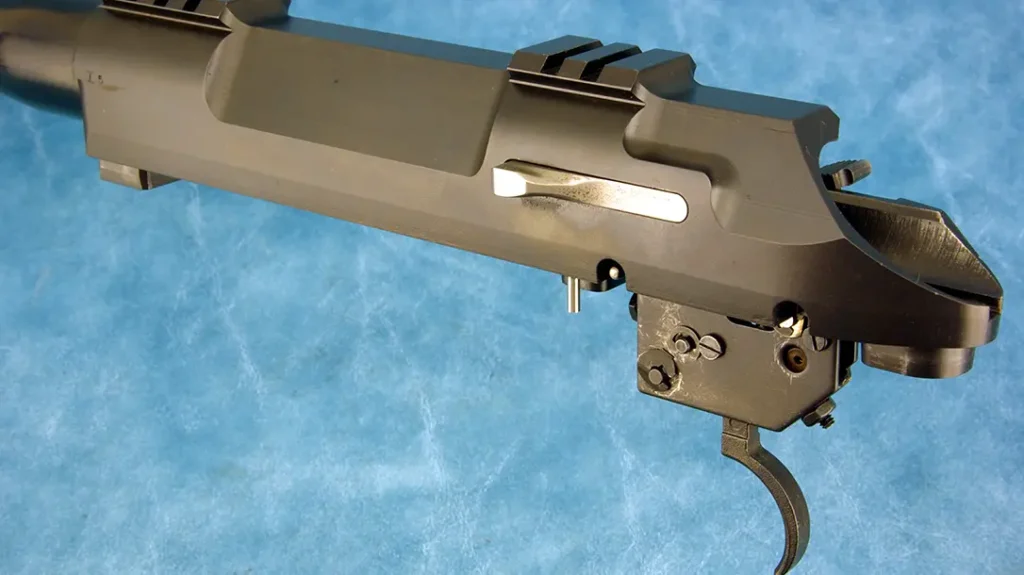
Advertisement — Continue Reading Below
Deconstructing an Icon
While the potential for economical production exists with tubular receivers, it’s not inherent to them. The Icon’s receiver, for example, was the most expensive kind—it was CNC-machined from a solid steel billet. Other nifty but costly design elements were integral Picatinny-type scope-mount rails (three slots up front and two on the bridge), a Mauser-type bottom metal unit that integrated the detachable magazine housing and trigger guard into one unit, and an externally adjustable trigger with a bolt-lock release working in conjunction with a two-position side safety.
As it turned out, the Icon debuted at $699, which made it a helluva bargain in 2007. However, that price proved unrealistic, and the gun’s price rose each year, so by 2012—the last year the Icon was cataloged—the price had increased to $1,147, and it was no longer competing in the price range originally envisioned. Apparently, the Thompson-Center folks saw the writing on the wall early, as evidenced by their launching the venture in 2009 with an MSRP of $499.
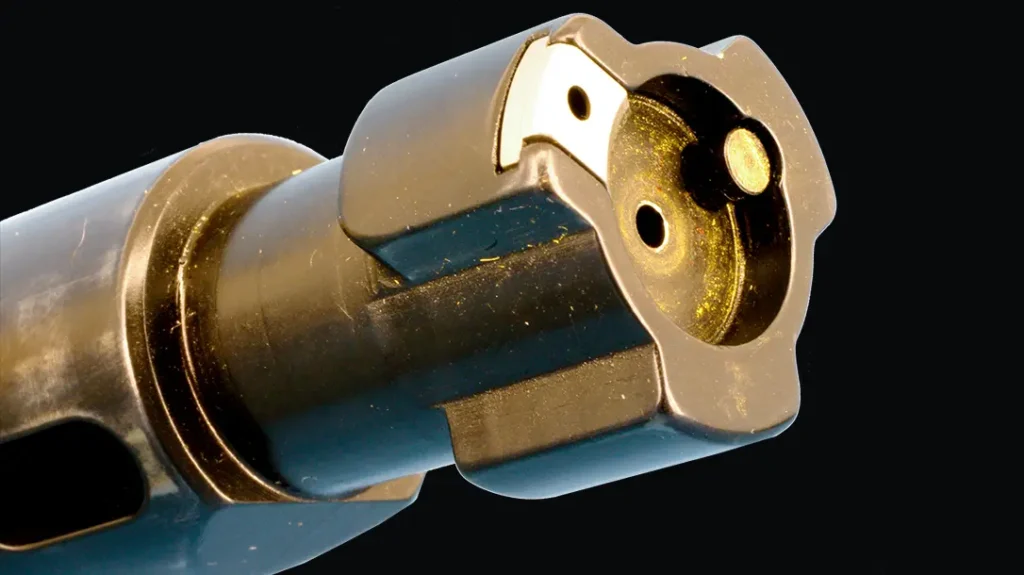
The Two Ventures
Quite simply, the venture was about as different from the Icon as one can imagine while still being the same gun. The venture’s bolt, for example, was identical to that of the Icon, meaning its receiver could be changed only in its exterior geometry; as long as it accommodated the same bolt, the two guns were essentially the same. Instead of a machined billet with a flat bottom, integral recoil lugs, and scope-mount rails, the venture’s receiver was a simple tube. As such, it employed a washer-type recoil lug sandwiched between the barrel and receiver ring, a la Savage 100 Series, Remington 700, Mossberg Patriot, et al.
Instead of the Icon’s walnut stock and aluminum bedding block, the venture’s handle was an injection-molded piece with an integral trigger-guard bow. Gone were the integrated bottom-metal unit of the Icon and its sheet-metal detachable magazine; in their place was a much-improved polycarbonate mag housed in a mortise in the stock itself. Gone too was the separate bolt-lock release that worked in conjunction with the side safety, the changeable bolt-handle feature, and the highly polished blue job. In short, all were compromises and shortcuts that greatly reduced production time and material cost without affecting performance.
Advertisement — Continue Reading Below
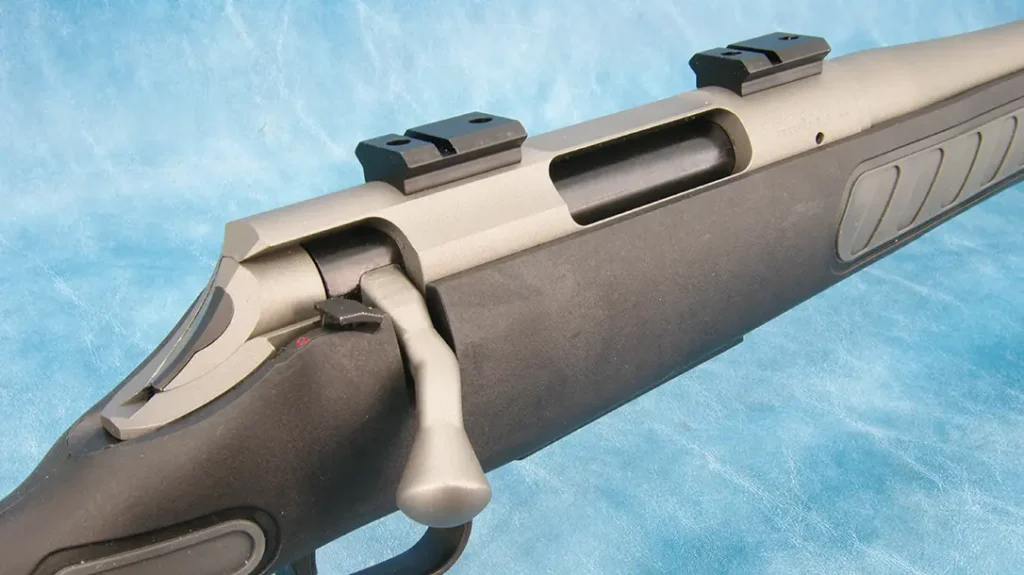
Venture II
Which brings us up to date and to the new Venture II. I happen to own an original Venture, and when I put the two guns side by side, the only outwardly visible difference is the presence on the newer gun of a threaded muzzle (1/2×28 or 5/8×24 depending on caliber), protected by a blued steel cap, and a Gen 2 trigger conceptually similar to the Savage AccuTrigger in that it has the thin blade projecting from the center of the finger piece that must be depressed before the gun can be fired. With the barreled action removed, one can, of course, see the changes in the trigger unit because of the change in its mechanics, but those are the only differences.
A significant change that can’t be readily seen is that the Venture II boasts 5R rifling, which means there are five lands and grooves instead of the conventional six. There are several advantages claimed for 5R rifling, which together are said to combine to make a better barrel. I will admit that it took me a while before I was convinced, but I am now a believer in 5R; I’ve shot at least 25 rifles with barrels having odd-numbered lands and grooves, and I believe that the average accuracy would prove better than if those same rifles were conventionally rifled. Now I’m not talking a huge difference—probably less than a quarter inch in average group size—but I’m convinced it’s there.
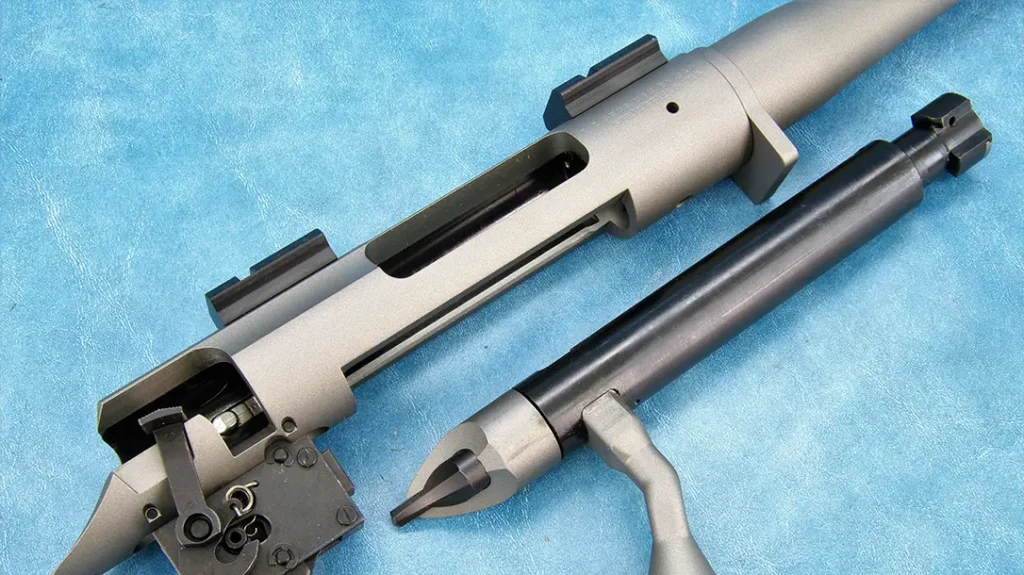
5 R Barrel
Now, let’s consider how 5R differs and why it’s better. Well, for one thing, there are no 90-degree edges or corners with 5R. The sides of the lands are sloped so that at the top edge of each land and at the bottom corner of each land where it meets the bore, there is an obtuse angle of about 105 degrees (more or less, depending on the manufacturer). And without those sharp corners, gas sealing is better because it’s almost impossible for the jacket material to fill in the 90-degree corners at the bases of the lands.
Advertisement — Continue Reading Below
The result is that, all other things equal, there’s less energy required to engrave the bullet (less friction), which in turn results in an increase in velocity (again, all other things equal). Moreover, there’s less bore fouling because there are no sharp inner corners to collect jacket material. It follows, too, that bore cleaning is easier and required less often. And lastly, with 5R rifling, there’s less surface area to the bore, which means there’s less deformation of the bullet during the engraving process. Combine that with all the other aforementioned features, and you have a barrel with a higher accuracy potential.
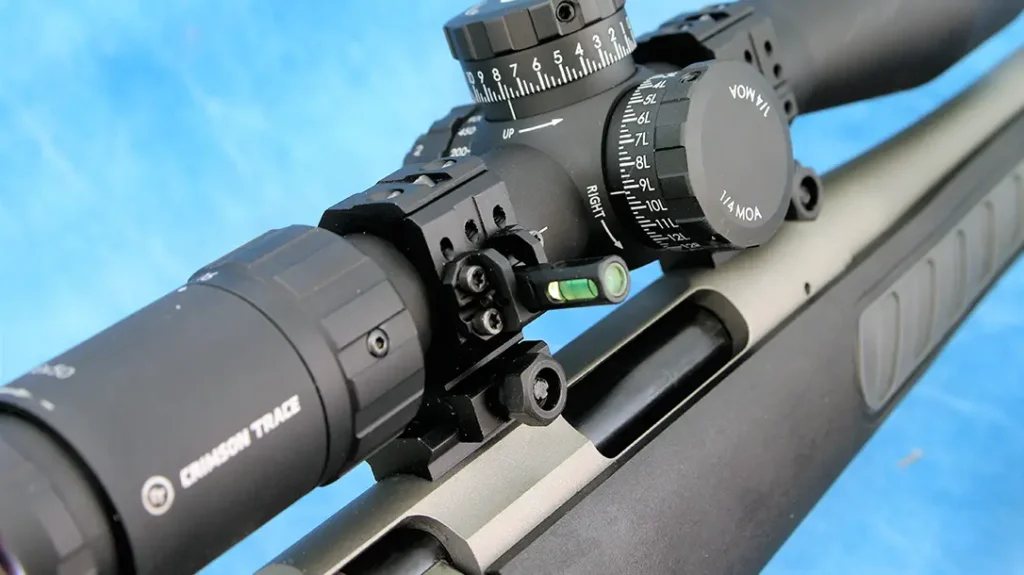
Decking Out The Venture II
The example sent to us for evaluation was chambered in 6.5 Creedmoor, the industry’s darling cartridge of the past several years. Because there’s no difference between the Venture and Venture II other than those already enumerated, I’ll not plow old ground. The barreled action of the test gun sports the same Weather Shield matte stainless-type metal finish as the original; it’s a proprietary one that claims to be many times more rust and abrasion resistant than raw stainless. The stock, too, is the same in that it’s an injection-molded polycarbonate with rubberized grip panels. I’m not a big fan of injection-molded stocks, but this one is among the stiffest I’ve seen, and I’ve seen just about all of them.
The barrel is fully floated the entire length of the forearm. The two-position side safety does not lock the bolt when engaged, and its movement is both positive and absolutely silent in its operation. The one-piece, three-round polycarbonate magazine with integral feed lips is an excellent one—easy to load, feeds cartridges almost effortlessly, and is much quieter than a steel box. Its release is located right at the front edge, and when pulled rearward, the box falls into your waiting hand. The gun comes with Weaver-style bases preinstalled.

Advertisement — Continue Reading Below
Range Time
To ready the gun for the range, we chose a conventional riflescope from Crimson Trace, a company far better known for its excellent electro-optic sights. There are 12 riflescopes in the Crimson Trace line—eight in its tactical series and four in the sport/hunting line. We thought the 4-16x50mm would be the most appropriate for the test gun, seeing that it’s a sporter-weight hunting rifle.
The scope-mount system we chose was quite interesting: Wheeler rings with a flip-out anti-cant level. Not only that, but whereas all other rings are split either horizontally or vertically, these are split diagonally at a 45-degree angle. With the scope aboard, the range-ready Venture II weighed a substantial 9 pounds, 6 ounces. As it came from the box, the test gun weighed 7 pounds, 5 ounces.
Off the bench, the test gun performed quite well, but this gun had to have a minimum chamber, making it difficult to close the action, and extracting a fired round took so much effort to raise the handle that it was impossible for me to cycle the action with the rifle shouldered. And that applied to all four loads.
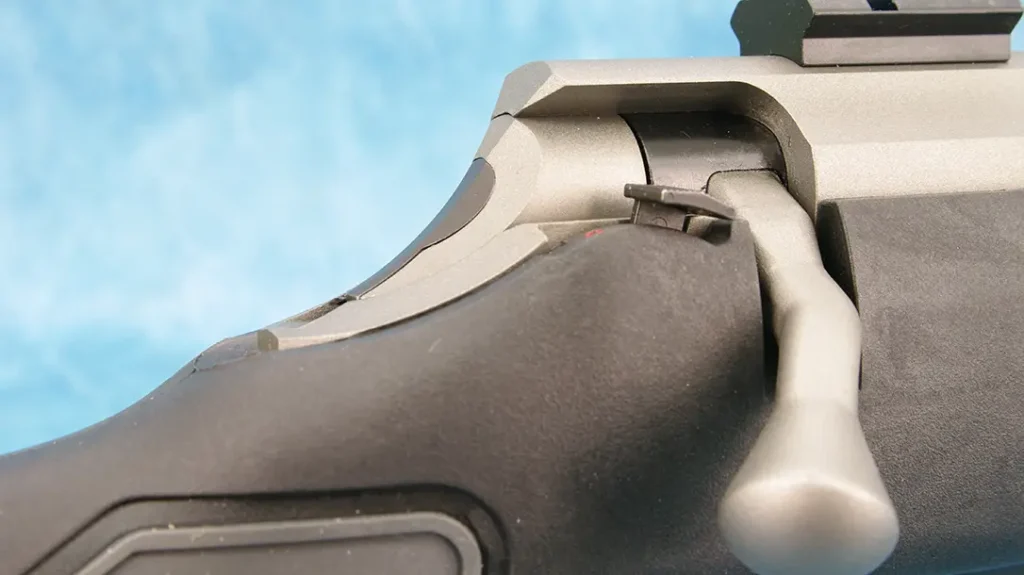
Need For Speed
Because 22 inches is the standard barrel length in the Venture II for short-action calibers (there is a standard-length action as well), and nominal factory-ammo muzzle velocities are established in 24-inch barrels, the claims for increased velocity because of 5R rifling can only be extrapolated. The last rifle I tested with a 24-inch barrel with 5R rifling showed that only one of four factory loads tested did not meet specs, and that one was short by just 20 feet per second. The other three loads exceeded expectations by an average of 35 feet per second. Now that’s not a lot, but when you consider that most factory loads usually don’t measure up to claimed velocity, it’s worthy of note.
Advertisement — Continue Reading Below
The unitized polycarbonate magazine was a breeze to charge, and cartridges fed effortlessly and butter smooth. The rubberized grip panels are a bit tacky, but they’re functional in that they provide a comfortable, non-slip grip.

Thompson-Center’s Venture II
As for accuracy, the data table shows that this test rifle managed to shoot at least one sub-MOA group with each of the four loads tested, and one averaged sub-MOA for all five 3-shot groups. All in all, this rifle delivered more than acceptable accuracy, and with there being so many 6.5 Creedmoor loadings out there, I have no doubt there are several that would average sub-MOA. Not bad for a $525 rifle! In addition to the 6.5 Creedmoor, the short-action version of the Venture II is available in .223/5.56mm, .243 Win, and .308 Win. In standard length, it’s.270 Win, 7mm Remington Magnum, .30-06, .300 Win Mag and .350
Legend. For more information, visit Thompson Center.
Also check out the Thompson/Center Encore PROHunter!
Advertisement — Continue Reading Below
Specifications: THOMPSON-CENTER VENTURE II
| Caliber: | 6.5 Creedmoor |
| Barrel: | 22 inches |
| OA Length: | 42 inches |
| Weight: | 7.3 pounds (empty) |
| Stock: | Composite with Hogue grip panels |
| Sights: | None – Weaver-style bases factory installed |
| Action: | Bolt |
| Finish: | Weather Shield matte silver |
| Capacity: | 3+1 |
| MSRP: | $525 |
Performance: THOMPSON-CENTER VENTURE II
| Load | Accuracy Average | Best | Worst |
| Hornady 129 Interbond | 0.95 | 0.80 | 1.15 |
| Hornady 143 ELD-X | 1.15 | 0.65 | 1.25 |
| Sig Sauer 120 HT | 1.25 | 0.95 | 1.40 |
| Sig Sauer 140 OTM Match | 1.05 | 0.80 | 1.30 |
Bullet weight measured in grains and accuracy in inches for five 3-shot groups at 100 yards.
Advertisement — Continue Reading Below
WHY OUR ARTICLES/REVIEWS DO NOT HAVE AFFILIATE LINKS
Affiliate links create a financial incentive for writers to promote certain products, which can lead to biased recommendations. This blurs the line between genuine advice and marketing, reducing trust in the content.

